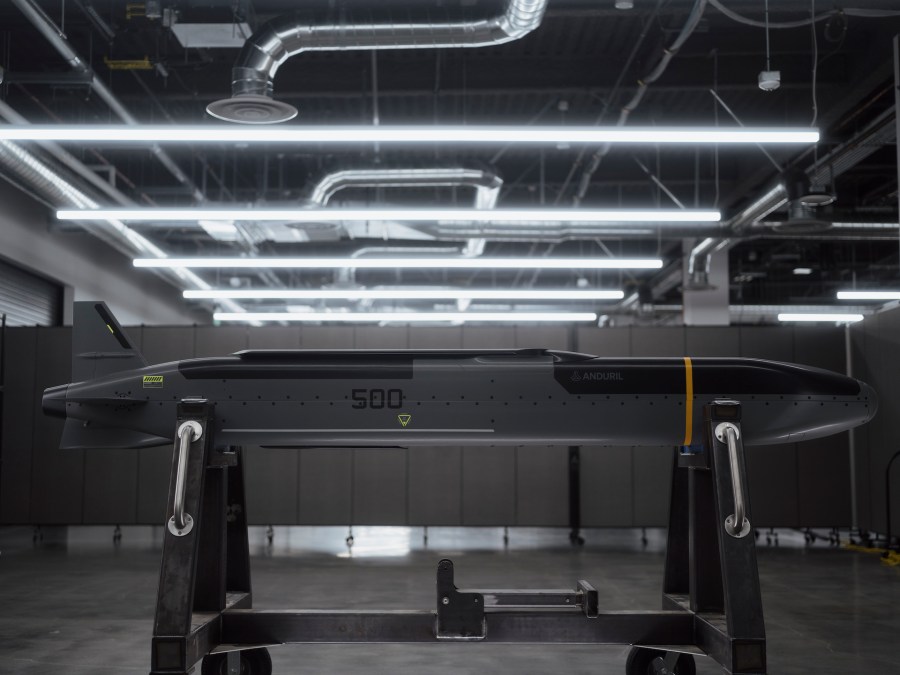Anduril reveals new family of software-defined, autonomous cruise missiles

Defense technology firm Anduril announced Thursday that it has developed a new line of air-breathing, software-defined, autonomous cruise missiles — one of which is the company’s offering for the Air Force’s ongoing Enterprise Test Vehicle program.
The Barracuda family of weapons leverage a modular design that enables the missiles to be mass-produced at low cost and high volume in order to meet the Defense Department’s growing demand for munitions. Each of the three variants — Barracuda-100, Barracuda-250 and Barracuda-500 — vary in size, range and payload capacity, but all of the systems can be fitted with additional capabilities to support a range of missions and launch mechanisms, according to the company.
Speaking to reporters Wednesday ahead of the announcement, Anduril Chief Strategy Officer Chris Brose said the contractor’s approaches to designing and manufacturing the Barracuda line is opposite to those for traditional weapons, which are dependent on military-specific supply chains, exquisite materials and specialized labor.
“What we had sought to do with Barracuda is solve that problem at the level of design, to build a system that is simple, that is easy to manufacture, that is software-defined and mass-producible,” Brose said.
All three variants are currently flying and undergoing continuous test and design iterations for their subsystems, Diem Salmon, Anduril’s vice president for air dominance and strike, told reporters.
Notably, the Barracuda-500 is the company’s solution for the Air Force’s Enterprise Test Vehicle (ETV) effort, Salmon said. The weapon is part of the first ETV demonstration for a low-cost cruise missile design dubbed “Franklin.”
Run by the Air Force’s Armament Directorate and the Defense Innovation Unit (DIU), the effort looks to design and field inexpensive, mass-producible air vehicles that can serve as modular test platforms. DIU announced in June that Anduril was one of four companies involved in the program, along with Zone 5 Technologies, Leidos Dynetics and Integrated Solutions for Systems.
Sources indicated that the ETV systems will be part of the Pentagon’s second tranche of Replicator capabilities and the first Air Force program to be selected for the high-profile initiative, DefenseScoop previously reported.
Brose noted that ETV isn’t the only Defense Department program that Barracuda cruise missiles are involved with, but he declined to share details about others.
“This is not designed to go specifically and rigidly at one specific problem. We have designed Barracuda to be able to range across a series of targets — from ground-based targets to maritime targets to others,” Brose said. “The ability to do this is sort of fundamental to the software definition of the system, which allows for rapid upgradability and ease of modernization to really change the capabilities of the system.”
Powered by Anduril’s Lattice for Mission Autonomy software, the Barracuda weapons are designed to be deployed in teams, Brose said. The autonomy used in the systems enable them to better understand their environment and fly in a collaborative formation with other missiles to identify targets, manage survivability and perform complex maneuvers, he added.
“You can obviously deliver those effects through a single air vehicle, but the real value of the capability — which is realized both in the high levels of autonomy and the low levels of cost — is the ability to actually deploy these as teams, to go out and do collaborative engagement,” he said.
Salmon emphasized that because of Barracuda’s modularity, the cruise missiles have a target price tag that’s 30 percent less than similar weapon systems. One missile requires half the time, 95 percent fewer tools and 50 percent less parts to produce, according to Anduril.
“The way we really focus on how to do that is focusing on subsystems and, in some cases, reusability of subsystems,” Salmon said. “So rather than designing bespoke capabilities for each single weapon system you’re trying to put out there, how do we actually make this simpler? How do we actually design out the hard parts?”
The weapons are deployable from air, ground and maritime platforms and are compatible with a variety of military systems — including fifth-generation aircraft, surface vessels and MLRS Family of Munitions launchers, the company stated.



